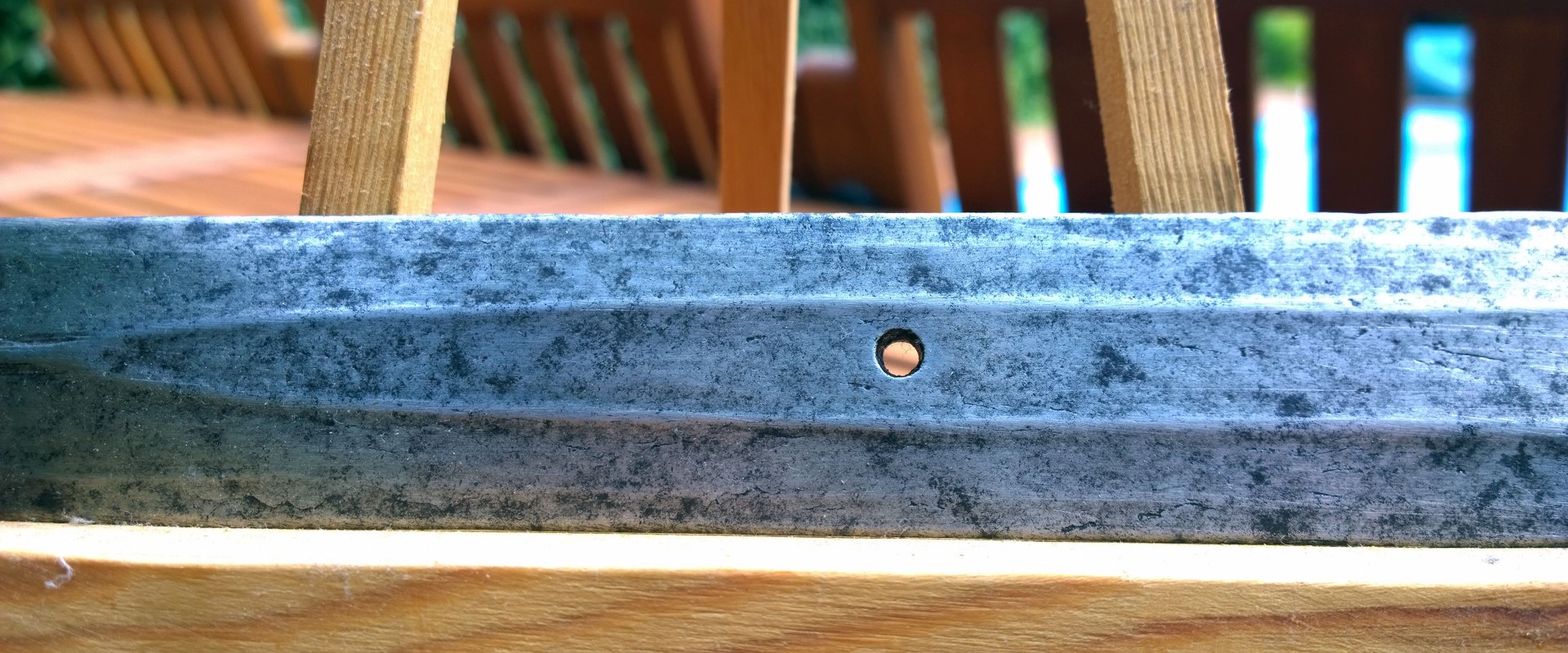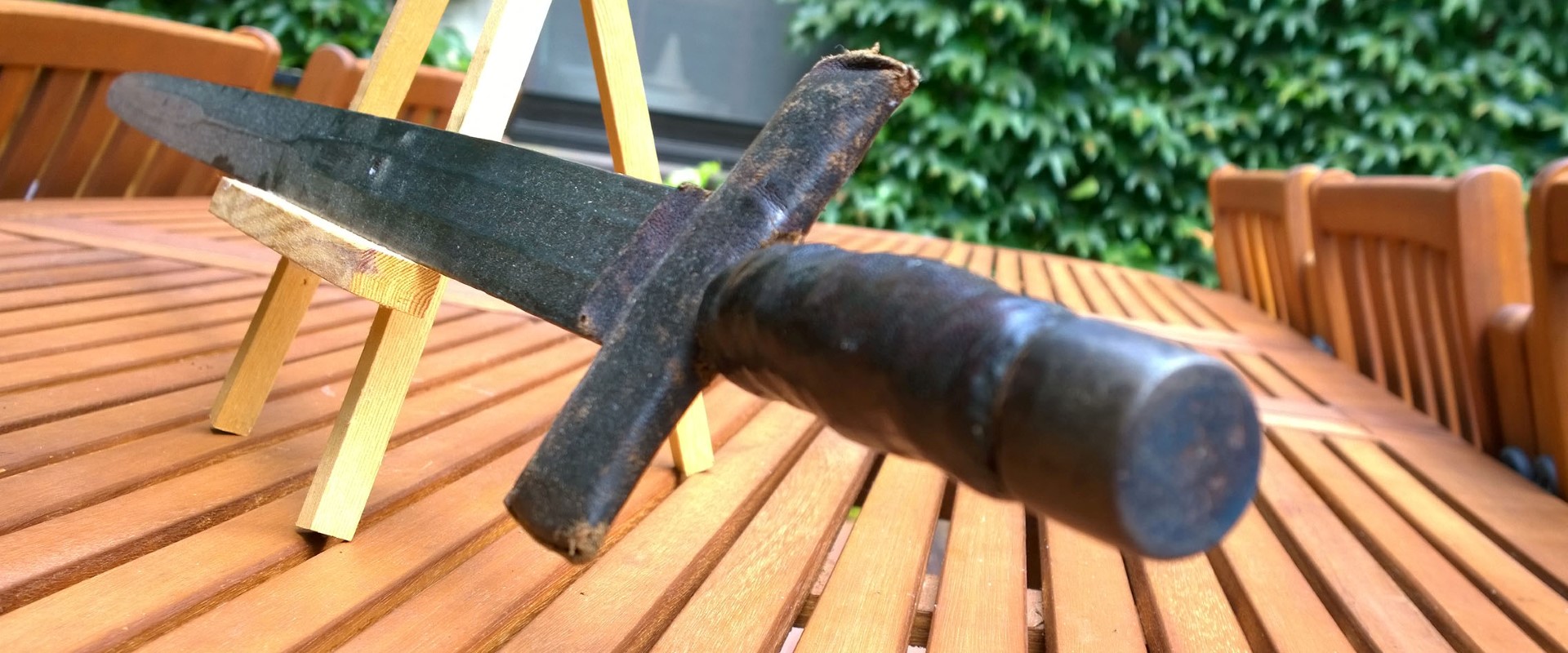
Forged from the Sand
October 8, 2023 African Arms
There is a unfortunate stereotype of the African smith as a maker of rudimentary items and their efforts with arms and swords in particular as vastly inferior to European or Asian blades. To a degree this is true. For a variety of reasons softer steels were used, smelting techniques were more rudimentary and imported blades were usually favored.
However these are the practical economics that prevailed, not a judgment on the skills of the smiths themselves. Which brings me to the sword pictured below.
This is one of my favorite swords. It is almost certainly from Northern Cameroon in the Mandara mountains region. Perhaps from the Wandala or Mundang, where cruciform hilt swords were known. It is very likely it was made from trade steel and iron smelted at a location like Sukur, where magnetite iron sand was collected from river and stream beds and smelted via clay furnaces into blooms containing steel and iron. The result was a high quality steel in demand for the production of tools and weapons. Large quantities were exported to the Bornu empire and the society of the area revolved around steel and iron production.

This sword is quite simply the best entirely West African or Sahel made weapon I've had the privilege to handle. The blade is a masterwork of intricate fullers and bevels. Two holes probably held copper or brass inserts.

The blade has a central fuller extending 1/3rd of the blade, defined by two raised ribs, with bevels leading to the edge. A central rib then continues for another 1/3rd of the blade terminating in a second central fuller of similar form to the first with a final rib leading to the tip. Both sides of the blade are identical.

The details are incredibly fine and precise throughout and one has to conclude whatever smith created this was certainly a master of his craft. The hilt by contrast is quite simple. The leather grip and cover on the guard were likely refreshed multiple times throughout the life of the sword. They are simple, unadorned and functional. The guard is a sold steel structure.

While the pommel is a solid cylinder of steel. The balance is excellent and the sword fits easily into the hand. A very comfortable weapon to hold.

This sword form seems to be quite rare, in particular this fuller arrangement. I acquired this example from a dealer in Poland with no other details regarding its story. Still, just the visual details of the sword tell us volumes.
This is a deceptively simple sword, but the details reveal the skill required to make it. The skill required to smelt the raw material, refine it, forge it, balance the hilt and define the keen edge. The steel is hard, the blade stiff and sturdy. Frankly this is a better made weapon than many takouba or kaskara.
The myth of the incapable African smith needs to fade into the mists of ignorance that bred it. This sword is a glimpse into the reality of a iron oriented cultures of North Cameroon and Nigeria.